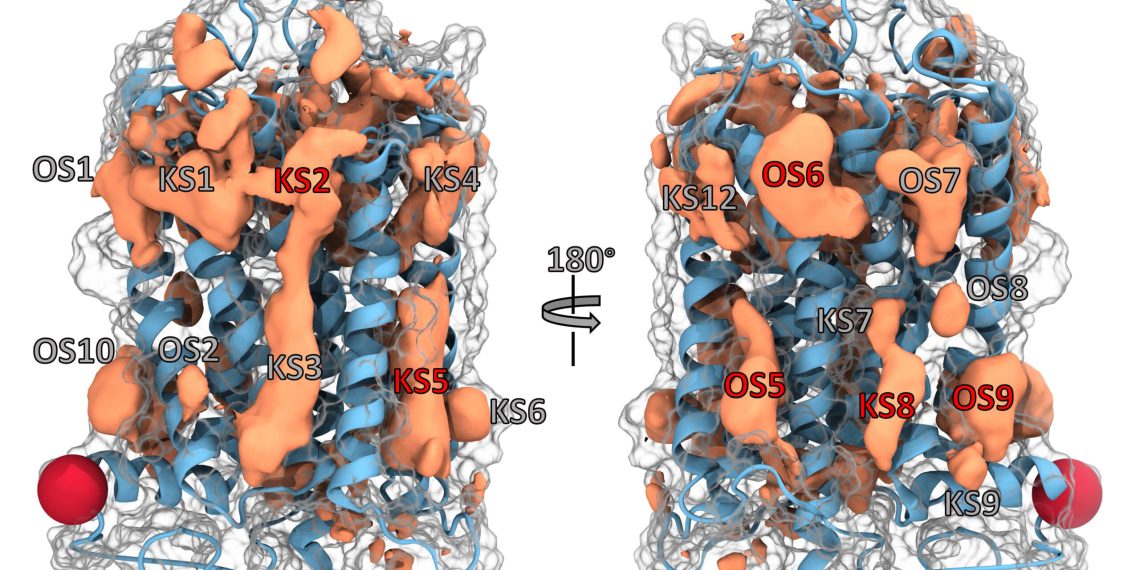An international team has used software to find new targets for future drugs. The scientists discovered several new coupling sites in one of the largest protein families, where active substances can be targeted. The research team reports their findings in the scientific journal Nature Communications.
They form the largest family of proteins that serve as drug targets: G protein-coupled receptors, or GPCRs for short, are involved in numerous life processes. These include inflammation, sensory processing and the action of hormones. This is also reflected in the importance of these proteins for medicine: nearly one-third of prescription drugs target GPCRs. “To block or stimulate the proteins, you need active ingredients that fit precisely into one of the proteins’ numerous binding pockets,” explains pharmaceutical chemist Professor Dr. Peter Kolb of Philipps University in Marburg, one of the lead authors of the paper.
These proteins serve to transmit signals from the outside of a cell to its interior, enabling the cell to respond to changes in its environment. To exert their effects, hormones and other endogenous messengers couple to the binding pockets of these proteins. One can suppress the effect of these messengers by occupying the binding pockets elsewhere.
“However, the coupling sites used so far are often very similar to each other,” Kolb elaborates; “that’s why drugs often have too little selective effect.” This increases the risk of side effects. For example, beta blockers are used to block such a protein in the heart, but if the same target is switched off in the lung tissue, this can trigger asthma attacks.
To find new binding sites, the research groups of Kolb and his Marburg pharmacy colleague Professor Dr. Moritz Bünemann joined forces, both of whom belong to the research consortium GLUE; GLUE stands for “GPCR Ligands for Underexplored Epitopes”. The consortium is looking into the question of how drugs can be tailored so that they precisely match their targets, i.e. bring about fewer unintended side effects. The state of Hesse is supporting the Central Hesse project from 2020 to 2023 with a total of 4.6 million euros through its “LOEWE” funding program.
“We did a computer-based search for alternative binding sites on 113 different GPCR proteins. In this way, we actually found several binding pockets that have not previously been drug targets”
- Janik B. Hedderich
Experimental studies on two of the binding pockets found complement the calculations. “We inserted mutations into these two pockets,” explains co-author Moritz Bünemann. “The results confirm that these protein segments have a crucial function for the activity of the GPCR proteins.”

















